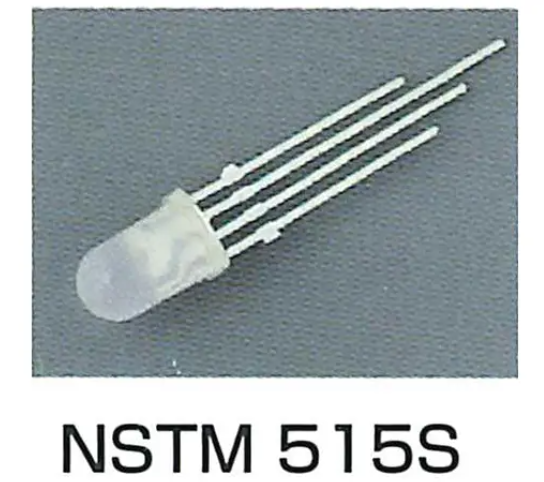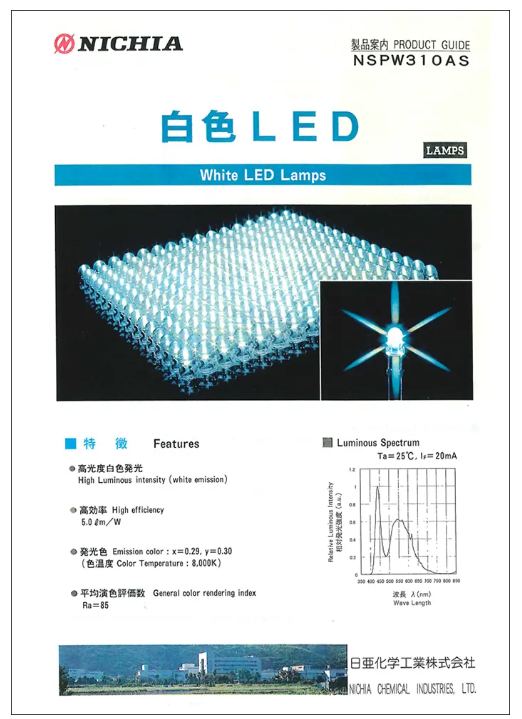Several years have passed since the launch of blue LEDs, and LEDs have been adopted for the three applications introduced in the previous post (traffic signal/display/scanner). Large screen display systems, which had been used mainly outdoors, have expanded to include large-sized displays used in stadiums to small, high-definition versions for advertising, such as those installed in buildings, and now indoor applications are in sight.
For indoor applications, the distance between the viewer and the screen is closer, so the LED pitch (distance between each LED) must be narrower, and the image resolution needs to be higher than that for outdoor applications to prevent the image from appearing grainy. However, LEDs at that time were packaged separately by color (blue, green, and red), and because the three colors had to be put together as a single dot, the space required to mount the LEDs was inevitably large, making it impossible to increase the resolution of the image. To overcome this problem, Nichia developed and launched the first 3-in-1 LED, which contained three different color LED chips in one package.

Figure 1. Nichia's first full color 3-in-1 LED NSTM515S
(Four leads for three-color emission)
Nichia received many inquiries and orders for this 3-in-1 LED from customers who were not manufacturers that developed and produced the large display devices that Nichia had initially targeted. Also, the applications were not what Nichia had expected. Nichia expected that customers would use this 3-in-1 LED for applications where colors can be controlled and/or changed; however, instead many of the inquiries wanted to use the product to emit light in a specific color. The color most frequently requested at this time was so-called “white.” This is because it is possible to produce white by mixing the three primary colors of light.
This voice was shared within Nichia, and the idea of utilizing phosphors, Nichia’s core business at the time, was suggested. This then led to the launch of "white LEDs" which combined blue LEDs with YAG phosphor that was selected from a wide variety of phosphors. White LEDs were commercialized in 1996. It is important to note that today, the most common use of blue LED chips is to make white LEDs. The specific applications and market expansion of white LEDs, which were created through this process, will be discussed in the next month.

Figure 2. The product catalog of world's first white LED "NSPW310AS" (1996)
Note:
NSTM515S and NSPW310AS are Nichia's part numbers.













